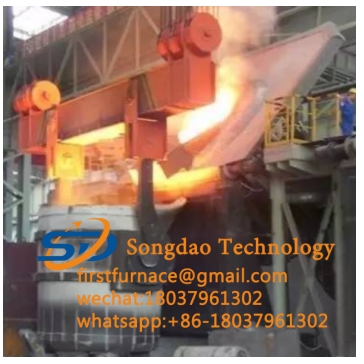- 01
- Dec
The difference between induction melting furnace and electroslag remelting furnace
The difference between induction melting furnace and electroslag remelting furnace
Principle of induction melting furnace:
The induction melting furnace is mainly composed of a power supply, an induction coil and a crucible made of refractory materials in the induction coil. The crucible contains metal charge, which is equivalent to the secondary winding of the transformer. When the induction coil is connected to the AC power supply, an alternating magnetic field is generated in the induction coil. Since the charge itself forms a closed loop, the secondary winding is characterized by only one turn and is closed. Therefore, induced current is generated in the charge at the same time, and the induced current is heated and melted by the charge.
The purpose of induction melting furnace:
It is widely used in the melting and heating of non-ferrous metals. Such as melting pig iron, ordinary steel, stainless steel, tool steel, copper, aluminum, gold, silver and alloys, etc.; induction melting furnace heating device has the advantages of small size, light weight, high efficiency, excellent thermal processing quality and favorable environment, etc. Eliminating coal-fired furnaces, gas furnaces, oil-fired furnaces and ordinary resistance furnaces, it is a new generation of metal heating equipment.
Principle of electroslag remelting furnace:
The electroslag remelting furnace is a device that remelts metals by using the heat generated by the electric current passing through the high-resistance slag. Electroslag remelting is generally carried out under atmospheric pressure, and a vacuum unit can also be equipped for vacuum refining according to needs.
Main uses of electroslag remelting furnace:
Electroslag remelting furnaces are widely used, mainly in the steel industry and metallurgical industry. The use of different slag materials can be used to refine various alloy structural steels, heat-resistant steels, bearing steels, forging die steels, high-temperature alloys, precision alloys, corrosion-resistant alloys, high-strength bronzes, and other non-ferrous metals such as aluminum, copper, iron, and silver. Alloys; molds of different shapes can be used to directly produce high-quality steel castings such as large-diameter steel ingots, thick slabs, hollow tube billets, large diesel engine crankshafts, rolls, large gears, high-pressure vessels, gun barrels, etc.
Features of electroslag remelting furnace
1. Due to the metallurgical reaction between the molten droplet and the molten slag, the effect of removing non-metallic inclusions is good, and the metal purity after remelting is high and the thermoplasticity is good.
2. Generally AC is used, no vacuum is required, the equipment is simple, the investment is small, and the production cost is low.
3. It is more suitable for the production of large-diameter ingots and special-shaped ingots. However, electroslag smelting is not suitable for refining metals that are easily oxidized, such as titanium, aluminum, and aluminum.
4. The environment is highly polluted, and dust removal and defluorination devices must be installed.

